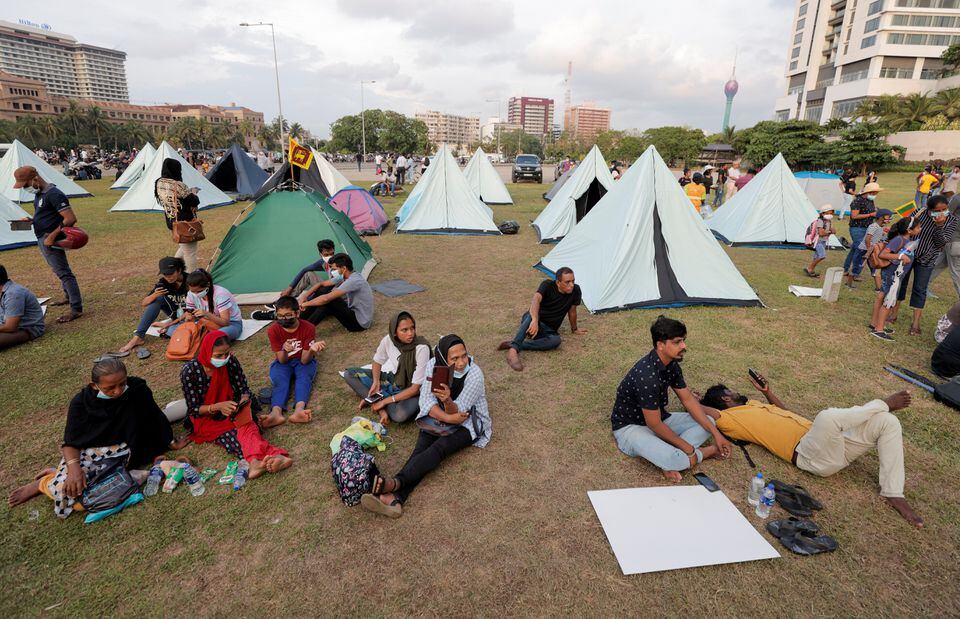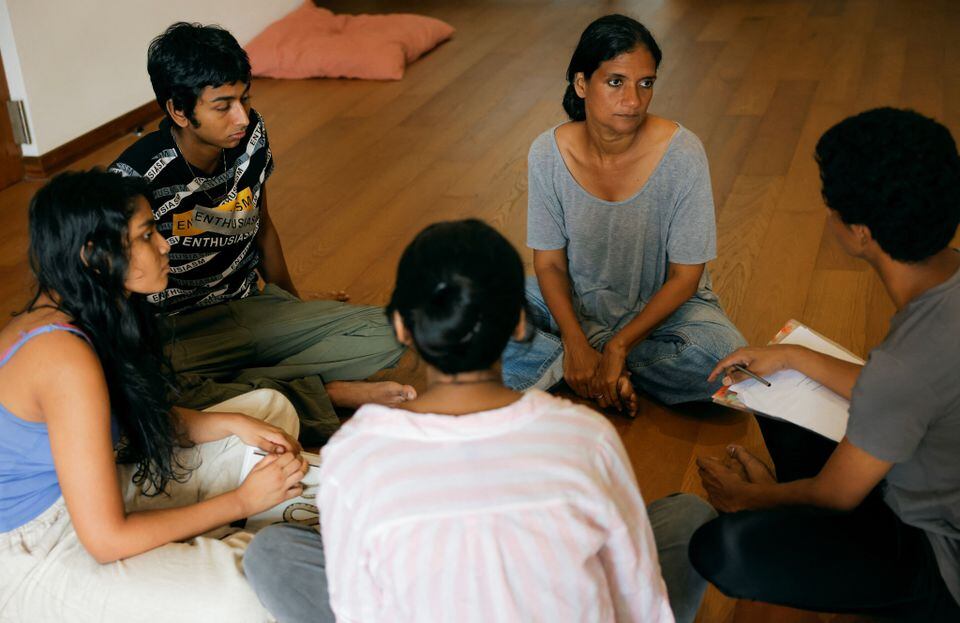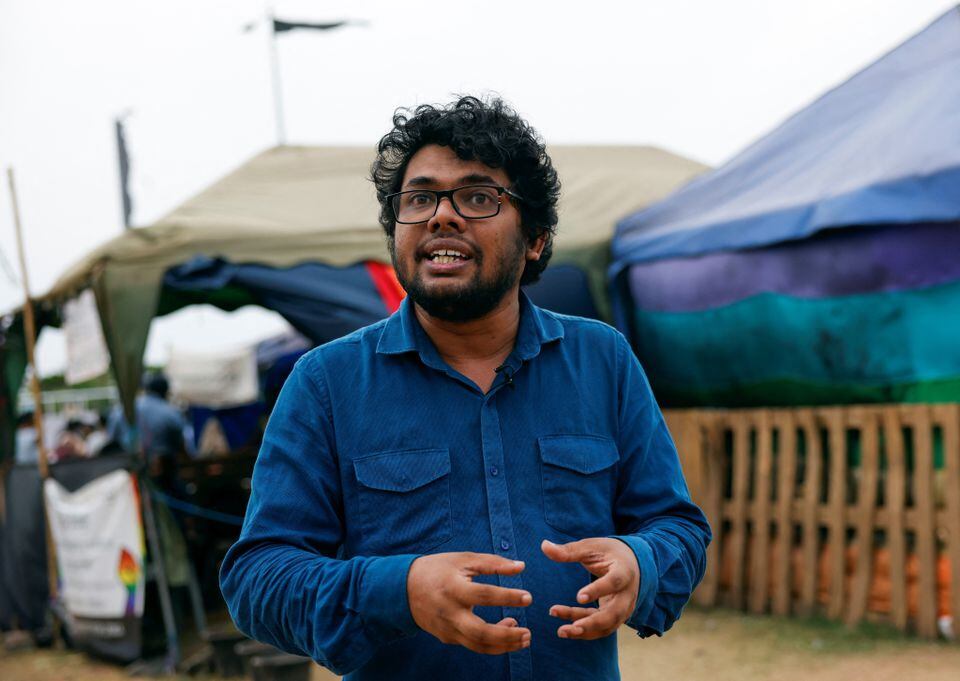ejaz007
SENIOR MEMBER

- Joined
- Jul 25, 2007
- Messages
- 6,533
- Reaction score
- 1
- Country
- Location
Sri Lanka crisis live news: State of emergency as president flees
Protesters tear gassed as anger grows after PM declares emergency and President Gotabaya Rajapaksa flees to Maldives.
Police use teargas as Sri Lankan protesters storm the compound of prime minister Ranil Wickremesinghe 's office [File: Rafiq Maqbool/The Associated Press]
By Joseph Stepansky
Published On 13 Jul 202213 Jul 2022
- The Sri Lankan prime minister’s office has confirmed that President Gotabaya Rajapaksa has fled the country.
- Rajapaksa, 73, left for the Maldives hours before he was expected to resign amid widespread protests over his handling of a devastating economic crisis.
- Prime Minister Ranil Wickremesinghe has declared a state of emergency across the island nation.
- Speaker of parliament has said Wickremesinghe has been appointed acting president by Rajapaksa.
- Hundreds of protesters in Colombo continue to occupy the official residences of the president and the prime minister after both buildings were stormed on Saturday.
- Sri Lanka is facing a severe shortage of fuel and other essential supplies and is seeking a bailout from the International Monetary Fund.
KEEP READING
list of 4 itemslist 1 of 4Sri Lanka president flees country amid political, economic crisis
list 2 of 4Sri Lanka protesters reject all-party gov’t, want Rajapaksas out
list 3 of 4Sri Lanka president’s brother stopped from flying out amid crisis
list 4 of 4Photos: Inside Sri Lanka President’s House occupied by protesters
end of listParliament Speaker says Rajapaksa has reassured him he will resign
Rajapaksa has contacted parliament speaker Abeywardene and reassured that his letter of resignation would be handed over before the end of the day, the speaker has told local media.Protesters had called for Rajapaksa and Wickremesinghe to resign by 1 PM local time (5:30 GMT), but the deadline passed with no official resignations.
The parliament will meet as scheduled on July 20 to elect the president’s replacement, the speaker said. Nominations will be accepted on July 19.
31 mins ago (08:40 GMT)
Protesters say efforts ‘in vain’ if Wickremesinghe stays
Reporting from Colombo, Al Jazeera’s Step Vaessen says protesters have decried Wickremesinghe appointment to acting president, saying they also want to see him go.He is “not a popular man at all among the protesters because they say he is involved. He has been supporting the Rajapaksa family, he’s been involved in all their misdeeds and mismanagement that have been happening in the last couple of months, Vaessen said.
“They want him to leave as well,” she said. “They say if he stays here and he becomes the next president, nothing has changed and all, all protests have been in vain.”
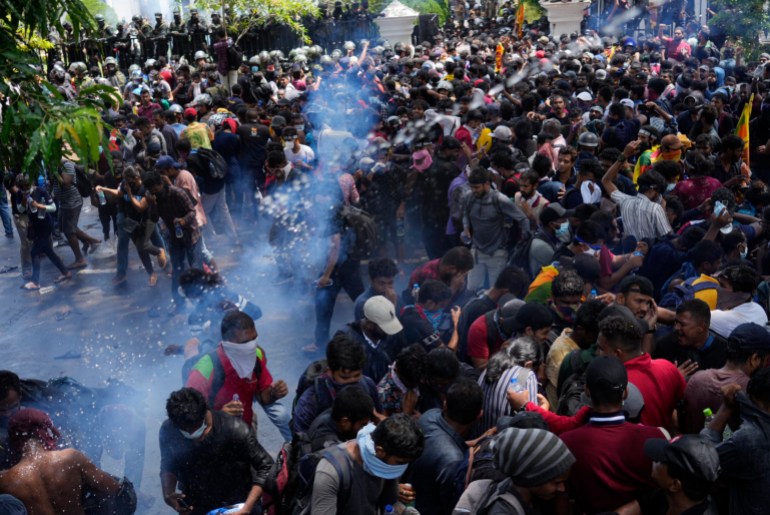
Police use teargas as Sri Lankan protesters storm the compound of prime minister Ranil Wickremesinghe ‘s office [File: Rafiq Maqbool/The Associated Press]
39 mins ago (08:33 GMT)
Maldivians decry, praise hosting of Rajapaksa
Maldivians have taken to social media to vent their anger at their government’s decision to let Rajapaksa into the country.Many are saying the Maldivian government is helping Rajapaksa, who has been accused of war crimes, evade justice in Sri Lanka.
“How dare you give him sanctuary in our country?” wrote Aimon Latheef, one Twitter user. “Send him back to back to Sri Lanka. Make him face his people.”
Sign up for Al Jazeera
Weekly Newsletter
The latest news from around the world.Timely. Accurate. Fair.Sign up
By signing up, you agree to our Privacy Policy
Some, however, praised the government’s decision, noting that Sri Lanka has given sanctuary to many Maldivians who have fled the country for fear of persecution during turbulent periods in the island nation’s history.
“Sri Lanka and Maldives are brothers and historically, Colombo was the shelter for many politicians,” tweeted Ismail Zariyand. “In the absence of an arrest order, how can the authorities reject the transit of the Sri Lankan president?”
52 mins ago (08:19 GMT)
Timeline: How things got here
Sri Lanka, an island nation of 22 million people has suffered months of lengthy blackouts, acute food and fuel shortages, and galloping inflation in its most painful downturn on record.Protesters for months have demanded the resignation of President Gotabaya Rajapaksa, whose government has been blamed for chronic mismanagement of the country’s finances.
Rajapaksa is expected to resign later on Wednesday.
How did things get here? Read more here.

People line up to visit Sri Lanka’s president official residence in Colombo [File: Arun Sankar/AFP]
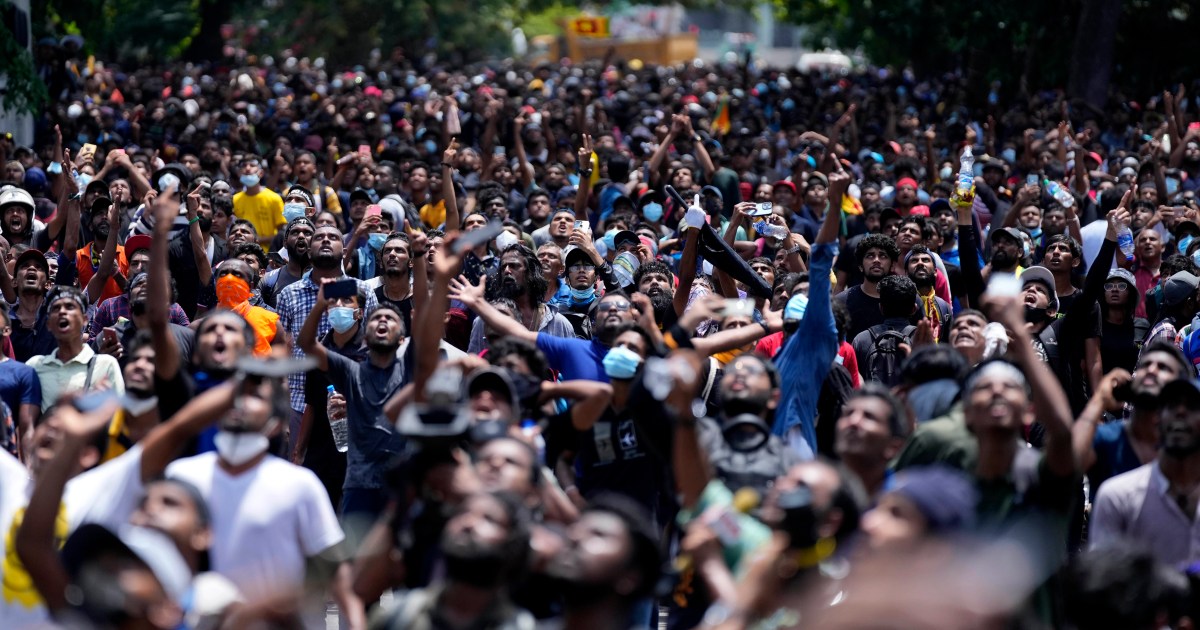
Sri Lanka prime minister asks speaker to nominate new PM
Ranil Wickremesinghe says new PM should be ‘acceptable to both the government and opposition’.



